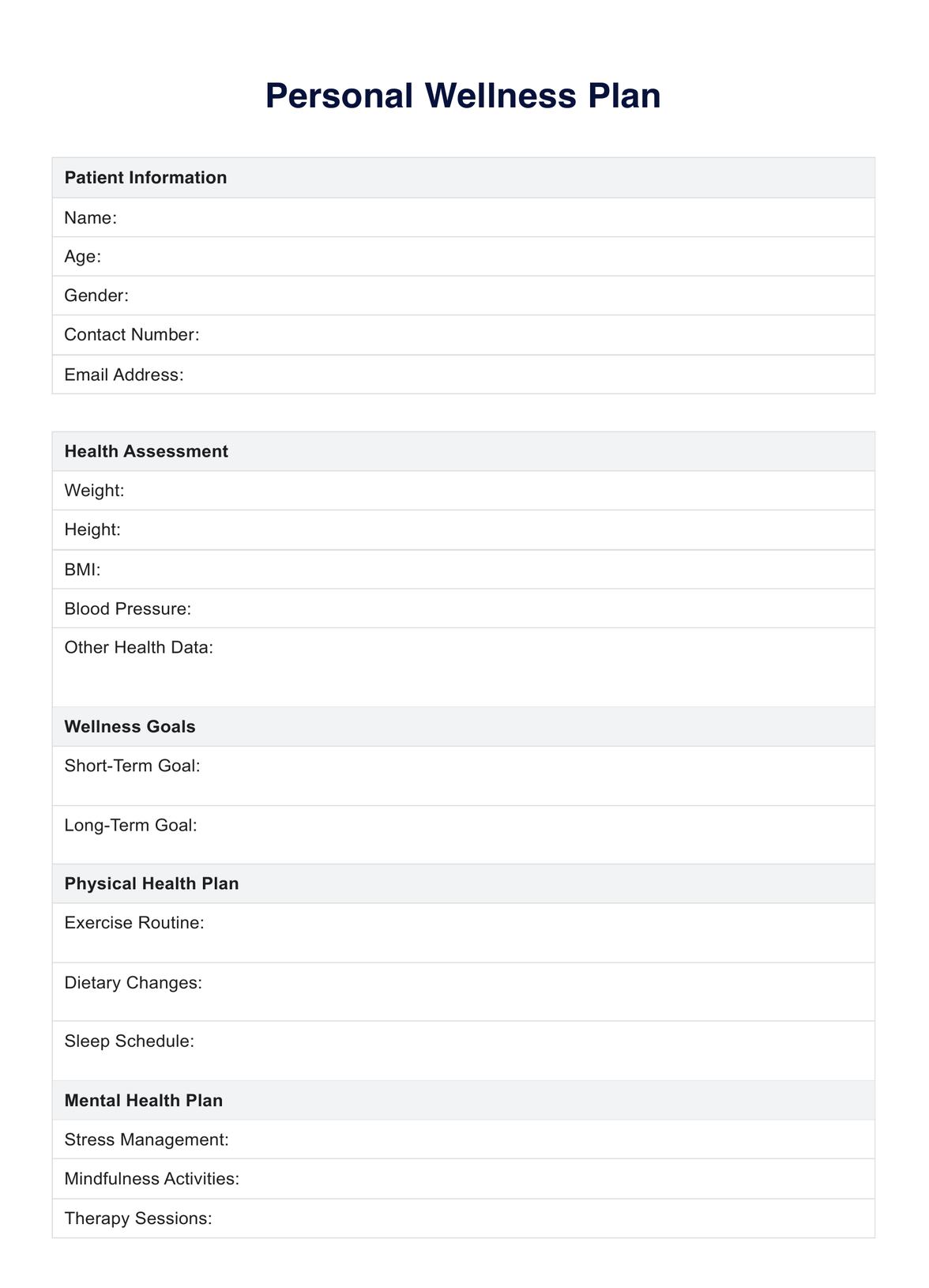A personal wellness plan can improve overall well-being, increase energy levels, better mental health, reduce stress and anxiety, better physical health, and decrease the risk of chronic diseases.

Personal Wellness Plan
Discover Carepatron's Personal Wellness Plan Template: the perfect blend of patient care and technology for healthcare professionals. Download now!
Personal Wellness Plan Template
Commonly asked questions
It is recommended to review your wellness plan at least once every six months or when your health or lifestyle changes significantly. Regularly reviewing and making necessary adjustments to the plan can ensure its effectiveness and help you stay on track with your wellness goals.
A wellness program typically refers to an organized approach, usually facilitated by employers or organizations, that aims to support the improvement of its participants' health. On the other hand, a personal wellness plan is a self-directed and tailored strategy for an individual's health improvement, encompassing various aspects of their wellness, like physical, mental, and emotional health.
EHR and practice management software
Get started for free
*No credit card required
Free
$0/usd
Unlimited clients
Telehealth
1GB of storage
Client portal text
Automated billing and online payments











